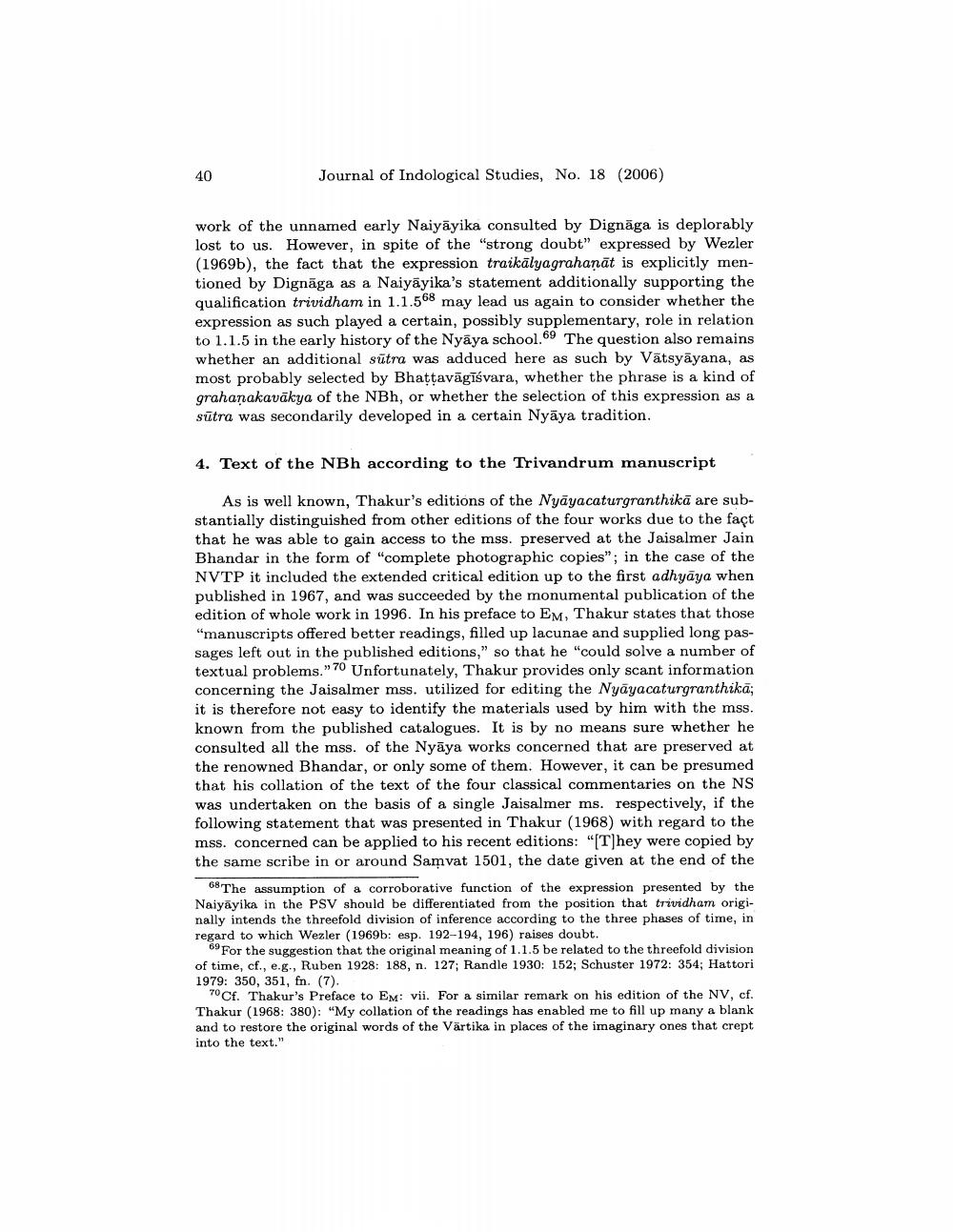________________
40
Journal of Indological Studies, No. 18 (2006)
work of the unnamed early Naiyāyika consulted by Dignāga is deplorably lost to us. However, in spite of the "strong doubt" expressed by Wezler (1969b), the fact that the expression traikālyagrahaņāt is explicitly mentioned by Dignāga as a Naiyāyika's statement additionally supporting the qualification trividham in 1.1.568 may lead us again to consider whether the expression as such played a certain, possibly supplementary, role in relation to 1.1.5 in the early history of the Nyaya school.09 The question also remains whether an additional sūtra was adduced here as such by Vätsyāyana, as most probably selected by Bhattavāgiśvara, whether the phrase is a kind of grahaņakavākya of the NBh, or whether the selection of this expression as a sūtra was secondarily developed in a certain Nyāya tradition.
4. Text of the NBh according to the Trivandrum manuscript
As is well known, Thakur's editions of the Nyāyacaturgranthikā are substantially distinguished from other editions of the four works due to the fact that he was able to gain access to the mss. preserved at the Jaisalmer Jain Bhandar in the form of "complete photographic copies"; in the case of the NVTP it included the extended critical edition up to the first adhyāya when published in 1967, and was succeeded by the monumental publication of the edition of whole work in 1996. In his preface to EM, Thakur states that those "manuscripts offered better readings, filled up lacunae and supplied long passages left out in the published editions," so that he "could solve a number of textual problems." 70 Unfortunately, Thakur provides only scant information concerning the Jaisalmer mss. utilized for editing the Nyāyacaturgranthikā; it is therefore not easy to identify the materials used by him with the mss. known from the published catalogues. It is by no means sure whether he consulted all the mss. of the Nyāya works concerned that are preserved at the renowned Bhandar, or only some of them. However, it can be presumed that his collation of the text of the four classical commentaries on the NS was undertaken on the basis of a single Jaisalmer ms. respectively, if the following statement that was presented in Thakur (1968) with regard to the mss. concerned can be applied to his recent editions: "[T]hey were copied by the same scribe in or around Samvat 1501, the date given at the end of the
The assumption of a corroborative function of the expression presented by the Naiyāyika in the PSV should be differentiated from the position that trividham originally intends the threefold division of inference according to the three phases of time, in regard to which Wezler (1969b: esp. 192-194, 196) raises doubt.
69 For the suggestion that the original meaning of 1.1.5 be related to the threefold division of time, cf., e.g., Ruben 1928: 188, n. 127; Randle 1930: 152; Schuster 1972: 354; Hattori 1979: 350, 351, fn. (7).
70 Cf. Thakur's Preface to Em: vii. For a similar remark on his edition of the NV, cf. Thakur (1968: 380): "My collation of the readings has enabled me to fill up many a blank and to restore the original words of the Vārtika in places of the imaginary ones that crept into the text."




